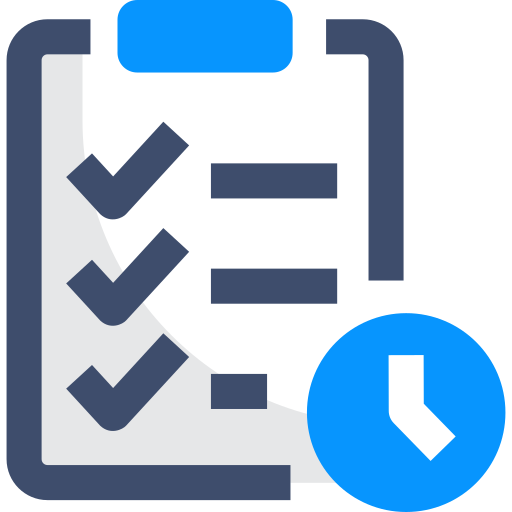Canada’s NOC Skill Type Explained in 3 Simple Steps
If you’ve just started researching Canadian immigration, you would’ve come across the term ‘NOC’ quite a bit.
The National Occupational Classification (NOC) is Canada’s standardized form of grouping and categorizing occupations based on several criteria such as:
Job title;
Lead statement;
The type of work that is performed;
Duties and responsibilities; and
The qualifications needed to perform the work.
NOC codes are a key component in your Canadian immigration process. Immigration, Refugees and Citizenship Canada (IRCC) uses this code to evaluate your ability to immigrate. It also assists you in getting a work permit in Canada.
One of the amazing things about Canada’s NOC system is that every occupation has a code, and you can tell a lot about the job just by analyzing its four-digit code. However, it may seem that there is an overload of information out there. There’s an easier way to decipher the meaning behind each unit of your specific occupation code.
Before applying for permanent residency in Canada, you need to understand the National Occupational Classification (NOC), what the numbers mean, and how they impact the ways in which you can live and work in the country.
Here is Canada's NOC Skill Type Explained in 3 Simple Steps
Step 1: Find Your Occupation’s NOC Code
The first thing you need to do is find your own NOC code based on your occupation. This information will help the Canadian government determine if you’re eligible to work in or immigrate to Canada.
Every job in Canada is assigned a code. An easy way to find your code is by looking on the Canadian government website. Remember that the same position might have different names across countries. Make sure you’re aware of what the term for your profession is in Canada. When you click on an NOC four-digit code, you’ll find a more complete description of the obligations.
Finding the correct NOC is very important.
If you apply for a visa with the incorrect NOC, or a code that doesn’t correlate with your skills and experience, then you’re in danger of having your application denied.
The two most important components of the NOC system are Skill Types and Skill Levels. According to the classification systems, occupations and subgroups take factors like the following into consideration:
the materials processed or used at each level
the degree of responsibility and complexity of work performed at each level
as well as the products made, or services provided at each level
what kind of work is being done at that level?
NOC organizes occupations by assigning them both a Skill Type and a Skill Level.

Step 2: Determine the Skill Type
Here is Canada’s NOC skill type explained in a basic form: there are 10 broad occupation groups numbered from 0 to 9. The wide occupational group is designated by the first digit of the NOC code. Manufacturing and utility jobs, for example, begin with the number 9. Management vocations, which are included in all broad occupational groups, begin with the number 0.
Broad Occupation groups are based on:
The sort of work performed
The sector of activity
Field of training
Experience necessary
Educational fields
Industry of work
Skill Type Classification
0 – Management occupations
1 – Business, finance, and administration occupations
2 – Natural and applied sciences and related occupations
3 – Health occupations
4 – Occupations in education, law and social, community and government services
5 – Occupations in art, culture, recreation, and sport
6 – Sales and service occupations
7 – Trades, transport and equipment operators and related occupations
8 – Natural resources, agriculture, and related production occupations
9 – Occupations in manufacturing and utility
Step 3: Determine the Skill Level
The skill level is represented by the second digit of an NOC code and illustrates a wide aggregate of education, training, and work experience, as well as the complexity of the job’s duties and responsibilities. There are five skill levels: 0, A, B, C and D. Every skill level has two digits from 0 to 7.
The table below illustrates that the second digit of an NOC code is a 2 or a 3, the skill level associated with the code is B.
Skill Level | ||
Alphabetical Code | Numerical digit | Education and Training |
A | 0 or 1 | University Degree |
B | 2 or 3 | 2-3 years of post-secondary education at a College or Technicon |
C | 4 or 5 | Secondary school and two years occupational training |
D | 6 or 7 | No formal educational requirements |
Managerial Occupations
The exception in the formula designed by NOC to classify occupations is management jobs. For Skill Type 0, which is management occupations, the second digit indicates the industry as all industries have management positions.
Occupations according to skill type
Here are some examples of occupations according to the skill type: For example, Skill 0 encompasses management jobs
Occupations According to Skill Type | |
Skill Type | Occupations |
0 | Restaurant Managers |
A | Doctors |
B | Policemen, Chefs. Electricians |
C | Truck drivers |
D | Cleaning staff |
Hierarchical Structure
The NOC code has four levels:
Level 1: 10 Broad categories
Level 2: 40 Major Groups
Level 3: 140 Minor Groups
Level 4: 500 Unit groups
Understanding the terms
Perhaps you’ll see that we throw around a lot of terminologies specific to the NOC. So here’s a breakdown of what some of these important terms mean, like unit group, minor and major groups:
NOC Terms | |
Terminology | Explanation |
Job title | The name of the job or position. Typically classified based on the work that is performed in that position |
Occupation | A group of jobs that are similar in the activities performed. |
Unit Group | A four-digit code used by the NOC that represents one or more occupations combined |
Minor Group | Three digits within the occupation code which represents the area in which an occupation is carried out. This encompasses several unit groups. |
Major Group | Two digits within the occupation code which represents the broad occupational category as well as the occupation skill level. This encompasses several minor groups. |
Moving To Canada
The NOC is an important aspect of applying for permanent residency in Canada because your occupation, which is categorized by skill, your job, field, experience, and education will determine how you can immigrate to Canada.

Skilled immigrants
You can use the Express Entry system if your skill type is 0, A or B. Under the three sub-programs
- Federal Skilled Worker Program
- Federal Skilled Trades Program
- Canadian Experience Class
Provincial Nomination Programs (PNPs)
PNPs accept all skill types if you have a skill or belong to an occupation that is in demand in a particular province. The province may then nominate you for immigration. You can have skill types 0, A, B, C or D.
Temporary Work Permits
Getting a work permit in Canada may be a great option if your occupation has a lower skill type. You may be able to apply for temporary work for a period of two years or as a seasonal worker, for example, if you have a skill type C or D.
This is just one component of understanding the immigration process. To get the bigger picture, contact us today and we’ll put you in touch with an immigration specialist:
a Regulated Canadian Immigration Consultant (RCIC) who will break down your options for you and make your process of moving to Canada as simple as these three steps.
Atlantic Immigration Program (AIP)
To qualify for the AIP, you’ll have to have skill type 0, A, B, or C.
The first step towards moving to Canada is to get an assessment of your specific situation. Call us today at +1 613.222.7154 for an assessment to see if you are eligible to move to Canada, or fill out our online assessment form.







